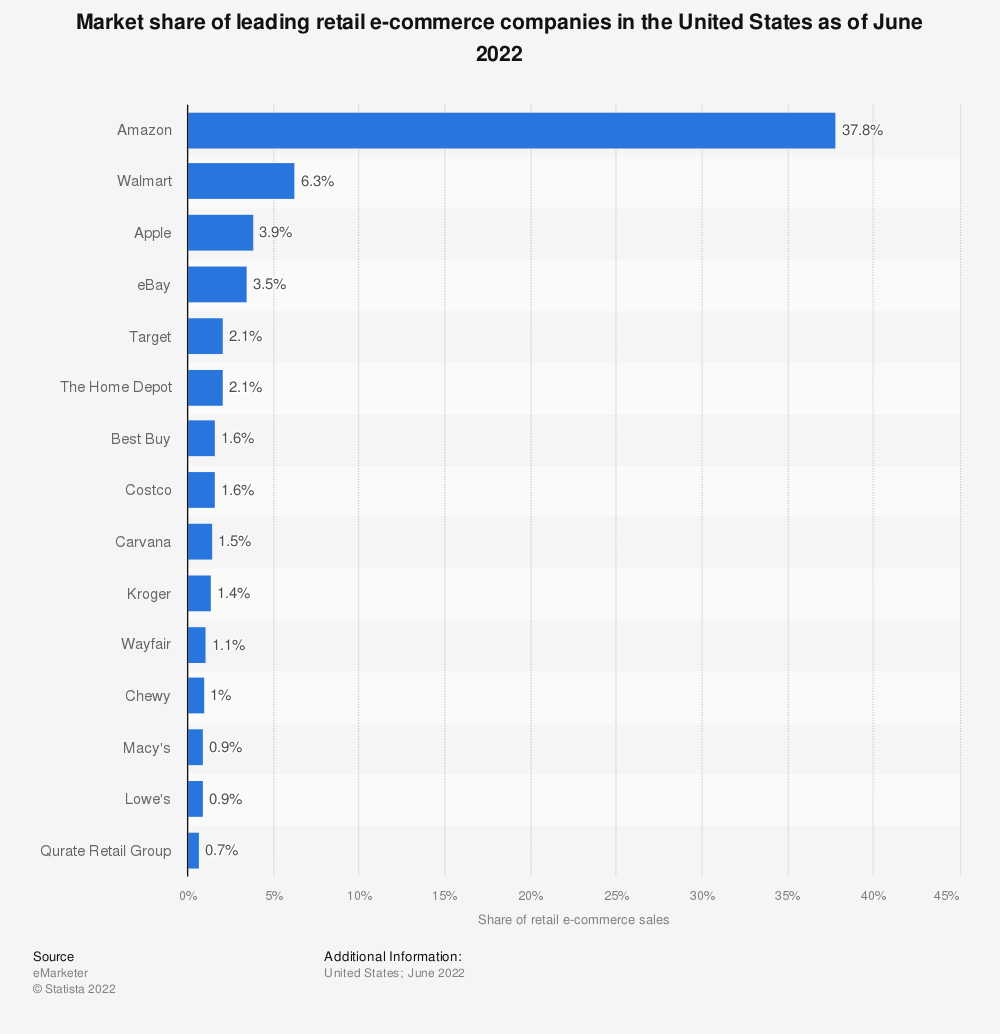Originally published on October 4, 2022, updated January 25, 2023
Menu
Join Our Email List
- Receive our monthly newsletter.
- Stay up to date on Amazon policies.
- Get tips to grow your business.
Even before the COVID-19 pandemic, Walmart was becoming the number one threat to Amazon. The company has been investing a lot in Walmart Marketplace, the Walmart online store, since the late 2010s. After 2020, its online income nearly doubled, reaching $43 billion in U.S. sales in 2021.
That kind of success is sure to catch the eye of Amazon sellers looking for new opportunities. But what is it like to sell on Walmart? What are the key differences, and is it worth the hassle to start?
Below, we dive into selling on Walmart vs. Amazon. We’ll explain how to sell on Walmart, the requirements to sell there, and how to effectively make the most of both markets simultaneously.
For many online sellers, Walmart Marketplace offers something a little different than what they’re used to on Amazon. For one thing, there are virtually no Walmart selling fees — as in, no subscription fees for sellers — a welcome change for Amazon retailers.
On top of that, Walmart Marketplace also has fewer sellers and therefore less competition than Amazon. This equates to marginally more page views on average, although it’s worth noting that Amazon receives far more visitors on the whole than Walmart Marketplace does. That means selling on Walmart.com is like being a big fish in a small pond.
In recent years, Walmart also began offering its Walmart Fulfillment Services, WFS, to rival the Fulfillment by Amazon, or FBA, program. Walmart’s WFS follows the same principle as FBA: sellers can pay to outsource order fulfillment and returns to streamline and simplify operations.
WFS includes two-day shipping and enhances your performance with higher search rankings and more Buy Box wins when you sell on Walmart.com. Unlike FBA, with its multiple fulfillment fees, WFS only charges fees for the product weight.
One of the best perks of WFS is personalized account management. Getting that kind of service on Amazon costs thousands of dollars per month and a percentage of your sales. It’s a nice advantage Walmart offers to help their sellers along.
Perhaps the biggest downside of the Walmart Marketplace is that not everyone can join. One of the requirements to sell on Walmart is that you must apply and be accepted so that low competition comes at a cost.
Applicants are judged on sales performance, previous marketplace experience, and fulfillment methods. To be accepted, they must also adhere to Walmart’s sales culture, which is to say, offering lower prices than their competitors, both on Walmart.com and external marketplaces.
Compared to Walmart.com, Amazon is both bigger and more expensive. There are more shoppers on Amazon and more internal traffic on the whole, but there are also more fees, with or without FBA.
 The competition is much more difficult on Amazon as it lacks the gatekeeping application process of Walmart and attracts retailers from all over the globe. Selling on Amazon requires tight management and strategic thinking, but the rewards can be worth it. (On the bright side, there’s plenty of third-party Amazon seller software to make things much easier!)
The competition is much more difficult on Amazon as it lacks the gatekeeping application process of Walmart and attracts retailers from all over the globe. Selling on Amazon requires tight management and strategic thinking, but the rewards can be worth it. (On the bright side, there’s plenty of third-party Amazon seller software to make things much easier!)
Sellers must pay a monthly fee of $39.99 for a professional account on Amazon, or pay $0.99 for each item sold. In either case, purchases are still subject to other costs, like Amazon’s referral fee.
All in all, Amazon is much more expensive than selling on the Walmart Marketplace. What you’re largely paying for is Amazon’s built-in shopper base, the largest of any online marketplace, including Walmart.com.
 Source: Statista
Source: Statista
The good news is that when it comes down to it, selling on Walmart vs. Amazon doesn't require choosing one or the other. You can take advantage of both!
We’re not talking about buying from Walmart and selling on Amazon, although that’s a viable strategy, too. (Note that if you are doing that, you must have the products shipped to you before you ship them to buyers. Amazon’s policies restrict having products from external sites shipped directly to Amazon customers.)
Sellers can still sell from accounts on both platforms. It’s twice as much effort managing two different sales platforms, but potentially twice as profitable. Walmart and Amazon both have their own customer bases, so you could almost double your outreach by playing both sides.
Of course, be prepared for more work. On top of basic account management for two marketplaces, Walmart Marketplace also has its own advertising platform, Walmart Connect. You’ll have to manage marketing campaigns on both platforms.
Related Reading: How to Sell on Amazon Successfully in 2023
If you’re already selling on Amazon, selling on Walmart Marketplace shouldn’t cost too much because they simply don’t have many fees. You will have to pass the application process, however, although having a successful Amazon brand will help you get accepted.
Deciding whether to sell on Walmart vs. Amazon is a decision that many businesses are still grappling with. While Amazon was once the clear winner, Walmart has started to close the gap in recent years.
If you sell on Walmart and Amazon, we'd love to hear about your experiences! What's working well for you? What would you do differently in hindsight? Let us know!
Originally published on October 4, 2022, updated January 25, 2023
This post is accurate as of the date of publication. Some features and information may have changed due to product updates or Amazon policy changes.
These Stories on Amazon
14321 Winter Breeze Drive
Suite 121 Midlothian, VA 23113
Call us: 800-757-6840





Copyright© 2007-2025 eComEngine, LLC. All Rights Reserved. eComEngine®, FeedbackFive®, RestockPro®, and SellerPulse® are trademarks or registered trademarks of eComEngine, LLC. Amazon's trademark is used under license from Amazon.com, Inc. or its affiliates.
No Comments Yet
Let us know what you think